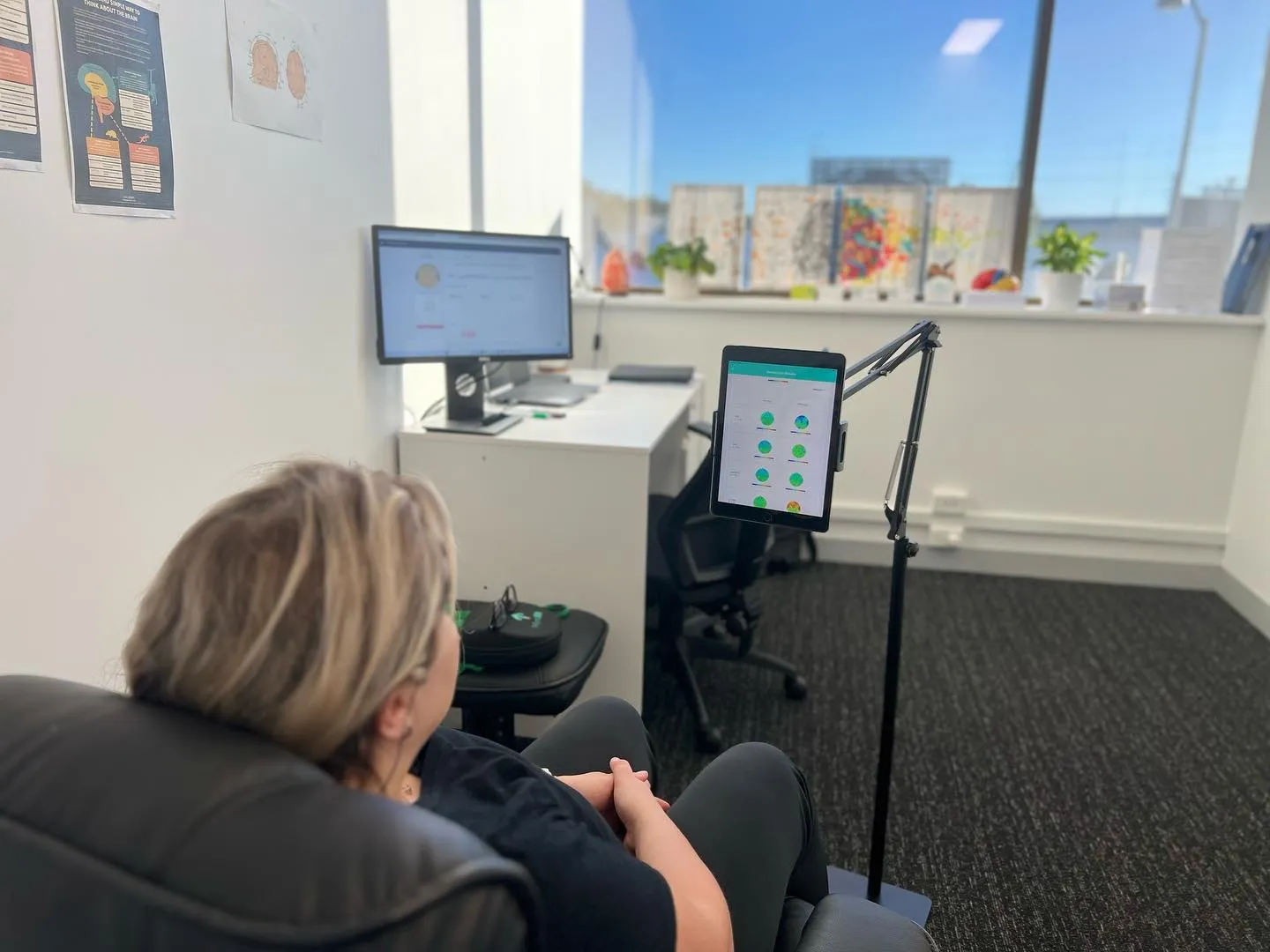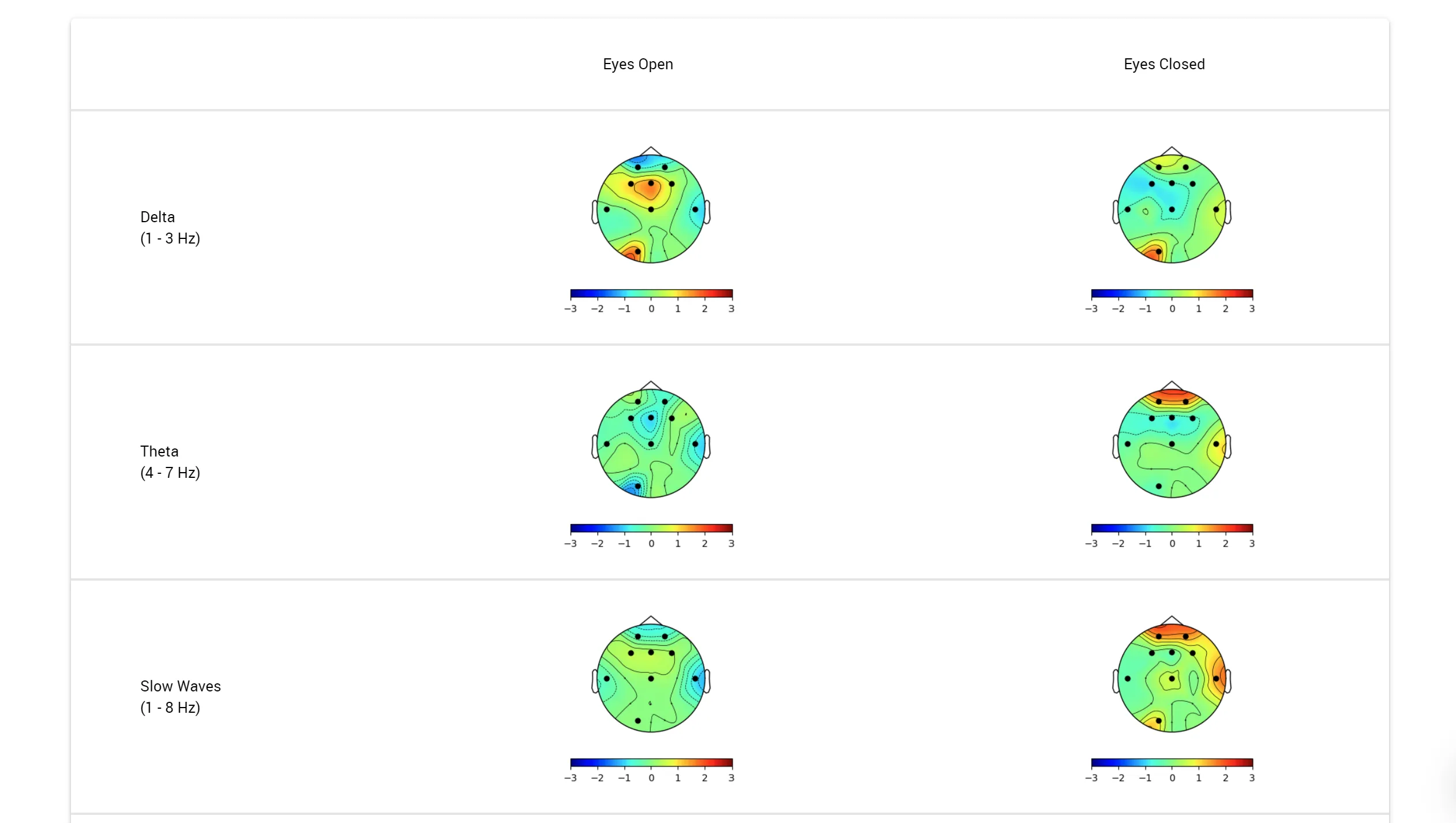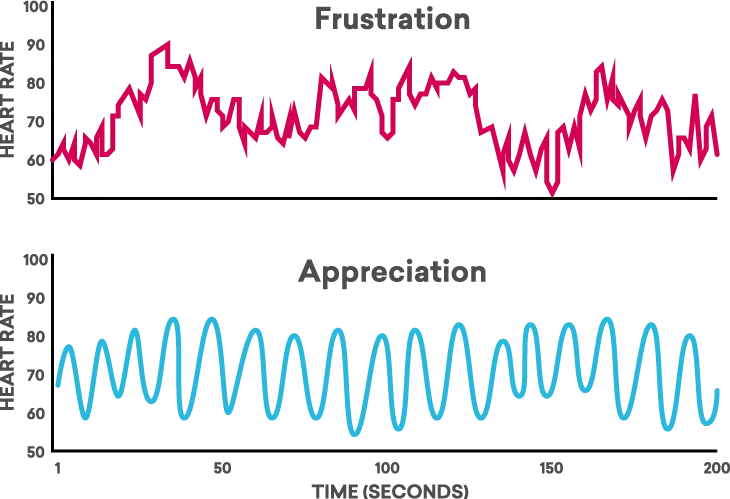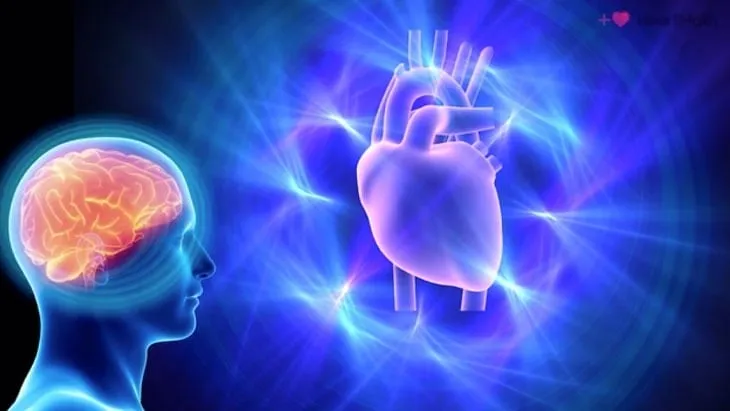The Science

Measuring Brain Activity
Brain labs and neurotherapy clinics have long employed EEG for the purposes of assessing cognitive functions, sleep, and even retraining the brain.
EEG Electrodes are placed on precise areas of the scalp. This plays a significant role in giving meaning to the generated signals.
To achieve the same placement flexibility and accuracy in interpreting the signals, Myndlift adds an external gold-cup electrode to the Muse headset.
Principles of Neurotherapy
Neurotherapy is a non-invasive, evidence-based practice that has been shown to have positive results linked to a host of brain-based conditions
Anyone can learn how to change their brain when using Neurotherapy
Neurotherapy doesn't 'do' anything to your brain. Rather is provides feedback that helps your brain learn how to re-wire itself (Neuroplasticity)
Changing the way your brain functions has a profound impact on your life, health and day to day living
What is Neurotherapy?
Neurotherapy, also known as neurofeedback, is a form of biofeedback that uses real-time displays of brain activity to teach individuals to self-regulate their brain function. The process involves the use of sensors, typically electroencephalography (EEG) sensors, which are placed on the scalp to measure brain waves. The EEG signals are then processed and displayed on a computer screen in real-time, usually as a visual representation such as a graph or a video game.
During neurotherapy sessions, individuals are trained to control specific aspects of their brain activity, such as the amplitude or frequency of their brain waves, by receiving feedback in the form of sounds or visual cues. For example, if an individual is trying to increase the activity in a certain brain region associated with attention, they may receive a positive reinforcement, such as a pleasant sound, when their brain activity in that region increases. Conversely, if their brain activity decreases, they may receive a negative reinforcement, such as a beep.
The goal of neurotherapy is to help individuals improve their cognitive and emotional functioning by teaching them to self-regulate their brain activity. It has been used to treat a variety of conditions, including attention deficit hyperactivity disorder (ADHD), depression, anxiety, post-traumatic stress disorder (PTSD), chronic pain, and sleep disorders. It is also used as a tool for peak performance training for athletes and in the corporate world.
Neurotherapy is non-invasive, drug-free and without negative side-effects. However, it is important to note that neurotherapy is not a standalone treatment and should be used in conjunction with other therapies and lifestyle changes for best results. It's also important to note that it's not a one-time treatment, but a series of sessions that need to be done over a period of time.
Optimizing Your Brain Activity:
Neurotherapy is a technique that leverages modern technology and scientific knowledge to train brainwaves. It is one of a broader group of biofeedback therapies relying on the principle that if a person can access information about their bodily functions in real time, they can learn to control them.
Biofeedback can be applied to a variety of bodily processes such as muscle tension, body temperature, or blood pressure, and a variety of conditions, including anxiety, migraines, and chronic pain.
Neurotherapy is a form of biofeedback based on a learning method called operant conditioning, which involves rewards and punishments for behavior. Through operant conditioning, an association is made between a behavior and a consequence (whether negative or positive).
The goal of neurotherapy is to train the brain to regulate itself and help you understand when your brain is in the desired state. Eventually, your brain may be able to maintain a more balanced state even when it's not receiving feedback.
Who's it for?

Simple answer... Anyone who wants to optimise the way their brain functions. Neurotherapy has been used by health professionals across the globe for decades, not only for those experiencing a specific condition such as ADHD or anxiety but even for those that may be in stressful careers and want to progress to the next level. Stress causes a host of symptoms and conditions and can have a measurable effect on the way our brain functions, from memory to creativity. Because of this Neurotherapy has been used for peak performance athletes and for those in stressful careers.
Neurotherapy is a non-invasive, evidence-based practice that can be used safely by those trained to conduct it.
The brain is the most complex piece of equipment known to the human race and because of this there is a lot that we still don’t know about it. However, this is why Neurotherapy is such an important practice because if your brain is not functioning optimally then you’re not functioning optimally and for any of us to continue to expand our knowledge we need to keep our brain operating optimally.
Understanding Brain Waves

Brainwaves are patterns of electrical activity occurring in the brain. They are related to many crucial aspects of brain function, like thoughts, emotions, and behaviors.
Try to think of them as musical notes: the low-frequency waves are like a deep drum beat, while the higher frequency brainwaves are more like a subtle, high-pitched flute. As a symphony, the higher and lower frequencies link and cohere with each other through harmonics.
Depending on what you're doing at the time, a particular brainwave may be dominant over the others. And if your brainwaves are not balanced properly, you may experience both emotional and neuro-physical health concerns.
For example, if the slower brainwaves are dominant, you may feel tired, sluggish, or dreamy. The higher frequencies are dominant when you feel focused or hyper-alert.
What is a Sequential qEEG?

Following your initial consultation where all your questions will be answered, we will run you through an assessment, covering questionnaires and a performance task. This is all carried out on an iPad Tablet. Then we will run you through the Sequential qEEG, this will allow us to 'map' your brain and see the electrical activity occurring in your brain at the time of the assessment.
One question we hear is 'does it hurt?'. The answer is 'no'. What we do is put a headband on you fitted with an additional axillary electrode. The axillary electrode allows us to move it around your scalp depending on the regions we will be measuring. We put electrode paste onto the electrode, this allows us to receive a good measurement to ensure we are getting the most accurate information possible. The most discomfort that you may experience is some electrode paste may be left in your hair following the assessment (don't worry we will give you wipes also, to clean any excess paste from your hair).
Following this assessment we will run through the findings with you, and we can determine the best protocols for your sessions ahead. We will also run you through another assessment throughout your sessions and on completion. This ensures and gives peace of mind that we are working in the right direction throughout your sessions.
Why Heart Rate Variability?

When we are experiencing any type of stress, physically or mentally we are causing an imbalance between the sympathetic nervous system and the parasympathetic nervous system. This imbalance causing very incoherent rhythmic patterns in our heart rate, and this incoherence causing us to 'think' more incoherent thoughts, and the cycle goes on. However, switching to a more positive emotional state has a very profound impact on the heart's rhythmic patterns. Feelings such as, joy, love, gratitude and happiness bring balance between both the sympathetic nervous system and the parasympathetic nervous system and the hearts rhythmic pattern moves in a very different way, and influences more feelings of joy, love, gratitued and happiness etc.
Scientists and medical experts recognise Heart Rate Variability (HRV) as a crucial indicator of overall health and fitness. Serving as a measure of both physiological adaptability and behavioral flexibility, it showcases our capacity to effectively cope with stress and meet environmental demands. Furthermore, HRV serves as a significant gauge of biological aging. In youth, our heart rate variability is at its peak, gradually diminishing as we grow older, leading to a narrower range of variation in our resting heart rate. While this decline is a natural part of aging, having an exceptionally low HRV for one's age group correlates with heightened risks of future health complications and premature mortality. Notably, diminished HRV is also evident in various diseases and disorders. Through mitigating stress-induced strain on the nervous system and supporting the body's innate regenerative mechanisms, consistent engagement in coherence-building techniques offers promise in restoring low HRV to optimal levels.
We offer this service as we know the importance of the relationship between the heart-brain connection.
The Heart-Brain Connection

Most of us have learned in school that the heart constantly responds to "orders" sent by the brain through neural signals. However, it's less commonly known that the heart actually sends more signals to the brain than vice versa! Furthermore, these heart signals play a significant role in brain function, influencing emotional processing and higher cognitive abilities like attention, perception, memory, and problem-solving. In essence, it's not just the heart responding to the brain, but a continuous interaction where the brain responds to the heart as well.
Research into the impact of heart activity on brain function has been ongoing for approximately the past 40 years. Initially, studies focused on the effects of heart activity occurring over short time scales – spanning several consecutive heartbeats at most. Scientists at the HeartMath Institute have expanded upon this research by examining how larger-scale patterns of heart activity affect brain function. HeartMath Institute studies have revealed that various patterns of heart activity, corresponding to different emotional states, have distinct effects on cognitive and emotional functions.
During times of stress and negative emotions, when the heart rhythm pattern is erratic and disordered, the neural signals traveling from the heart to the brain inhibit higher cognitive functions. This impairs our ability to think clearly, remember, learn, reason, and make effective decisions. Consequently, this can lead to impulsive and unwise actions under stress. Moreover, the heart's input to the brain during stressful or negative emotions reinforces the emotional experience of stress. Conversely, the more ordered and stable pattern of heart input to the brain during positive emotional states has the opposite effect – it enhances cognitive function and reinforces positive feelings and emotional stability. Therefore, learning to cultivate increased heart rhythm coherence by sustaining positive emotions not only benefits the entire body but also profoundly impacts perception, thought, emotion, and performance.
I'm sure you've heard the saying 'we are what we eat'. Well, when we are not feeling well, or we are experiencing negative results in our life, it's truly incredible if we begin to take a look at our nutrition in-take and make some small changes, how much this can impact our mindset and our general wellbeing.
When we are not fueling our brain and body correctly this can have a large impact on our mental and physical health. This is solely why we include the opportunity for you to sit down with our nutritionist and go through your meals and look for any areas that can be improved upon.
Music - Weightless by Marconi Union

The Study of the song "Weightless" by Marconi Union, has garnered significant attention for its profound impact on reducing anxiety and promoting relaxation.
A study conducted by Mindlab International revealed that "Weightless" can reduce anxiety levels by up to 65%, making it one of the most relaxing pieces of music ever recorded.
The song's carefully crafted soundscape, which includes harmonious rhythms, serene melodies, and a continuous tempo of 60 beats per minute, helps to slow the listener's heart rate, lower blood pressure, and decrease levels of the stress hormone cortisol.
The study involved participants completing a series of stress-inducing tasks while listening to different songs. "Weightless" stood out for its exceptional ability to induce a state of relaxation, outperforming other tracks specifically chosen for their calming properties. The combination of scientific principles and musical artistry in "Weightless" demonstrates the power of sound in enhancing mental well-being and highlights the potential of music therapy as a valuable tool in managing stress and anxiety.
To read through the study, please click the link below.
Coaching & Personal Development

When implementing any type of change in our life, we are changing our subconscious mind. This can raise difficulties, challenges and even fear or worry. This is all normal processes and it's our minds way of protecting us. However, what if the change is going to benefit us and our life? This is exactly why we give coaching and personal development approaches throughout your Neurotherapy program.
With coaching and personal development involved in your program we are covering all basis and setting a great foundation for the change to become habitual in your life.
Why Nutrition?

I'm sure you've heard the saying 'we are what we eat'. Well, when we are not feeling well, or we are experiencing negative results in our life, it's truly incredible if we begin to take a look at our nutrition in-take and make some small changes, how much this can impact our mindset and our general wellbeing.
When we are not fueling our brain and body correctly this can have a large impact on our mental and physical health. This is solely why we include the opportunity for you to sit down with our nutritionist and go through your meals and look for any areas that can be improved upon.
© 2025 Neurotherapy Australia - All Rights Reserved.
